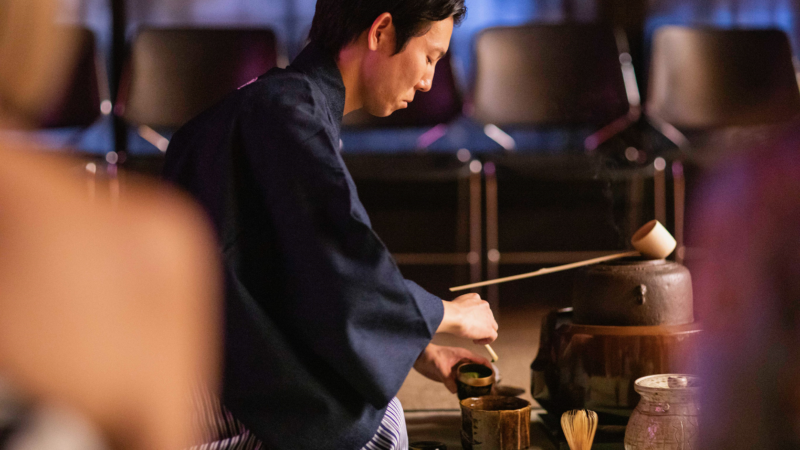One of the most iconic fruits in the world is the simple strawberry. Recognizable from a distance, with a tart-yet-sweet taste that makes it a favorite among many. Yet this basic berry is not as simple as it appears: for one thing, it’s not even a berry where botany is concerned, and for another, there are over 600 varieties of strawberry, 150 of which are grown in Japan alone!
Of these, the most popular may well be the sumptuous Amaou Strawberries. Known as the “King of Strawberries,” Amaou are notable for their distinctive taste profile, their bright red color, their size, and their mild acidity, as well as their winter availability. Unlike most strawberries, which are at their best in the late spring and early summer, Amaou season runs from November through mid-March.
On March 26th, 2021, acclaimed chef Jehangir Mehta held a virtual Amaou Cooking Event in collaboration with Yelp, to display the unique qualities of Amaou Strawberries and show how they can be used. Thirty Yelp Elites, many of whom are food influencers themselves, attended the event over Zoom and were able to taste Amaou samples in their homes. Recently, Mr. Mehta met with us to share his thoughts about the event and about Amaou Strawberries themselves.
Before even biting into the strawberries themselves, Mr. Mehta discusses their name. The word “Amaou” is itself an invention, made to describe the berries themselves. “A” comes from “Akai” meaning “Red” (あかい), “Ma” comes from “Marui” meaning “round” (まるい), “O” comes from “Ookii” meaning “large” (おおきい), and “U” from “Umai” which means “tasty” (うまい). Taken together, the name “Amaou Strawberry” can be roughly translated to “red, round, large, tasty strawberry,” which is a lot for a single berry to live up to! But it also puts the eater into a mindset that the taste will be delicious, and when it looks and tastes the way the name sounds, it makes for a very good first impression.
The taste is quite different from American strawberries, largely due to lower acidity, which Mr. Mehta attributes to the growing conditions: the limestone that is used, the bacteria in the soil, the temperature of the soil, the warm and cloudy climate in which they are grown, and the slow growing process that makes them sweeter. He notes that while strawberries from farmer’s markets are often quite sweet and delicious, they’re not usually very big, while the large ones from supermarkets are often bland and watery, and lack the intensity of the smaller ones. Amaou Strawberries manage to have the best of both worlds, merging the large size with the sweetness and intensity usually limited to smaller, homegrown berries. As to the texture, he likens Amaou Strawberries to stone fruits like peaches and apricots, with juice that seeps out when you bite into one, as well as a similar mild acidity.
Because Amaou Strawberries are so intensely juicy and flavorful on their own, Mr. Mehta suggests eating them as-is for the ultimate strawberry experience. If you want to use them in a dish, he recommends keeping them as fresh and whole as possible. It can be quickly seared if necessary, but pureeing it means that you lose the mouthfeel, which diminishes the authenticity of the strawberry. On the other hand, using them in a spinach and strawberry salad, on a Christmas Cake, or wrapping them in mochi to make Ichigo Daifuku, are all ways to keep the integrity of the strawberry intact, while getting to enjoy it with a variety of different flavors and textures. (He also notes that KitKat does have a limited edition Amaou Strawberry collaboration in the winter for people who like chocolate and strawberries to enjoy!)
At the Amaou Cooking Event on March 26th, many of the guests expressed similar opinions to Mr. Mehta’s. They were pleasantly surprised by the large size and intense color of Amaou Strawberries, as well as the sweetness and texture. Because they were so used to getting good strawberries from the farmer’s market, where they are usually tasty but on the small side, seeing something so big and so juicy was a new experience for them. There are many qualities one can look for when shopping for strawberries: color, size, juiciness, sweetness, texture. Often, you have to pick and choose, but Amaou ticks off all of these boxes, which was a surprise for everyone. Mr. Mehta was delighted to note that while many foods (and even some people) don’t live up to the meanings of the names they are given, Amaou matches every part of its name very well. He even called it a “good child to be proud of,” a compliment that would make anyone smile.
One barrier that keeps people from trying Amaou Strawberries is the price tag. Even fancy organic strawberries usually retail for maybe twelve dollars a pint at their most expensive, while Amaou retail for $40 per pack. Though the difference comes from the growing conditions and relative rarity, this gulf in prices stops most casual consumers in their tracks, and can make Amaou Strawberries difficult to market.
Because of this, Mr. Mehta suggested targeting the marketing to high-end chefs, using someone knowledgeable about the food industry instead of a typical salesperson to better translate Amaou’s unique qualities. He felt French chefs would be especially interested, as well as chefs at expensive Japanese restaurants, where the dessert doesn’t always fit with the main courses. Because sushi itself is often a one-bite dish, offering a single Amaou Strawberry as a course would have a lot of potential. Another option would be to use the Amaou in a dish, in much the same way that foie gras pairs well with strawberries. Because sushi chefs are used to explaining why their ingredients are so expensive, they are already primed to look for the very best ingredients for use in their work, which makes them an excellent target market for Amaou Strawberries.
Another option would be to work with high-end grocery stores known for selling luxury items, such as Eataly, which, though it has mostly sold Italian foods, has also begun branching out. This would shift the burden of educating the consumer onto the markets, letting them teach their patrons about the painstaking process of growing Amaou Strawberries. These markets also have the advantage of already having the kind of clientele that would consider spending $40 on a pack of strawberries without balking at the price, so it’s a win/win situation. In short, even though Amaou Strawberries are expensive, there are several ways of reaching out to the people who can understand and appreciate their special qualities without being turned off by the price tag.
As we wrapped up, Mr. Mehta stressed the importance of knowing the story behind the foods that we eat. He has noticed more of an interest in this lately, of people asking which farm their salad greens came from, for instance, though he admits that he’s not sure if it’s due to genuine interest or it’s just a fad, where everyone is asking because they’ve seen other people ask. And though he doubts that someone would walk out of a restaurant if a chef didn’t know where their eggs came from, he does think it’s important to know how we get our food, and to educate ourselves and those around us, even when they’re not sure they want to know, or why.










